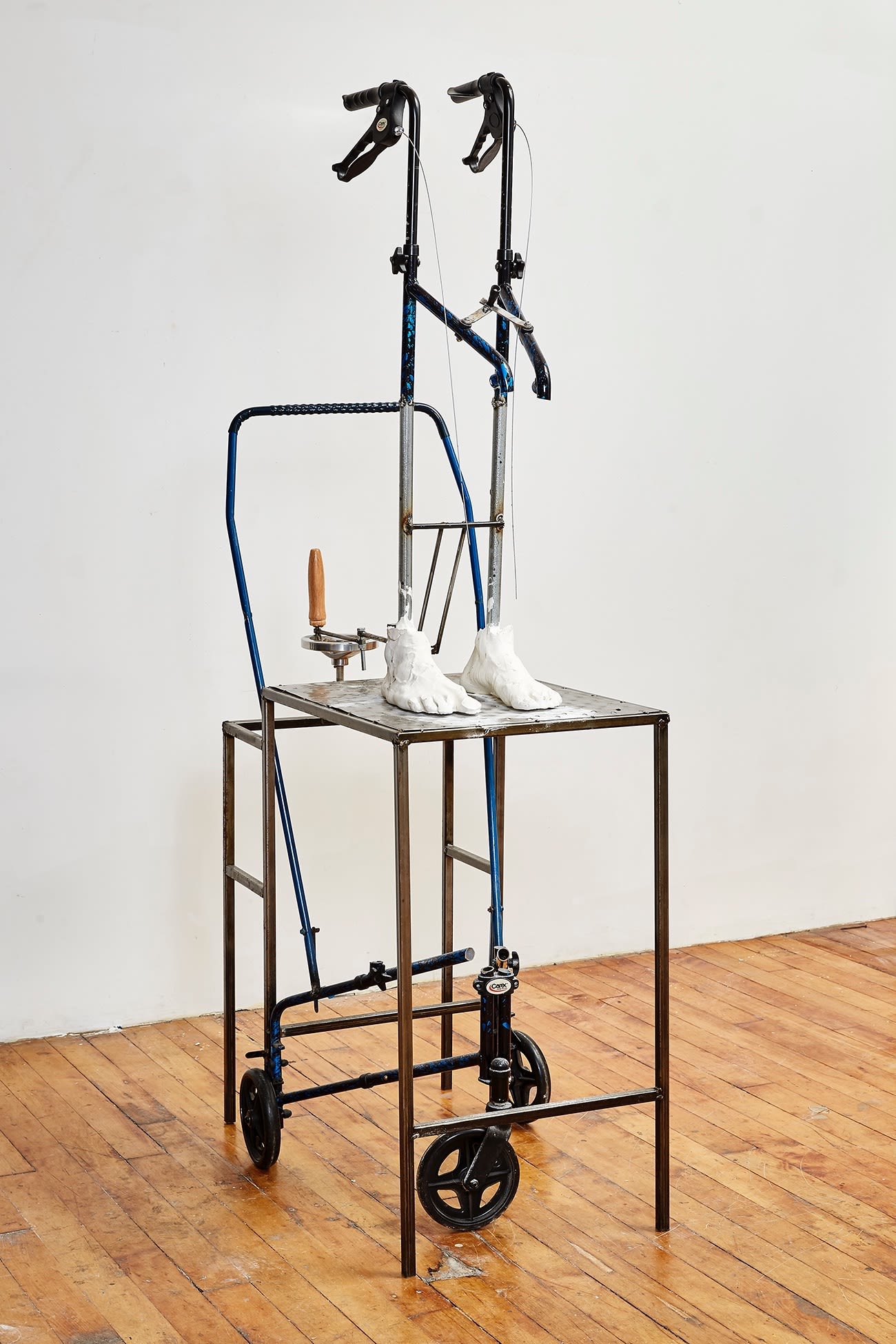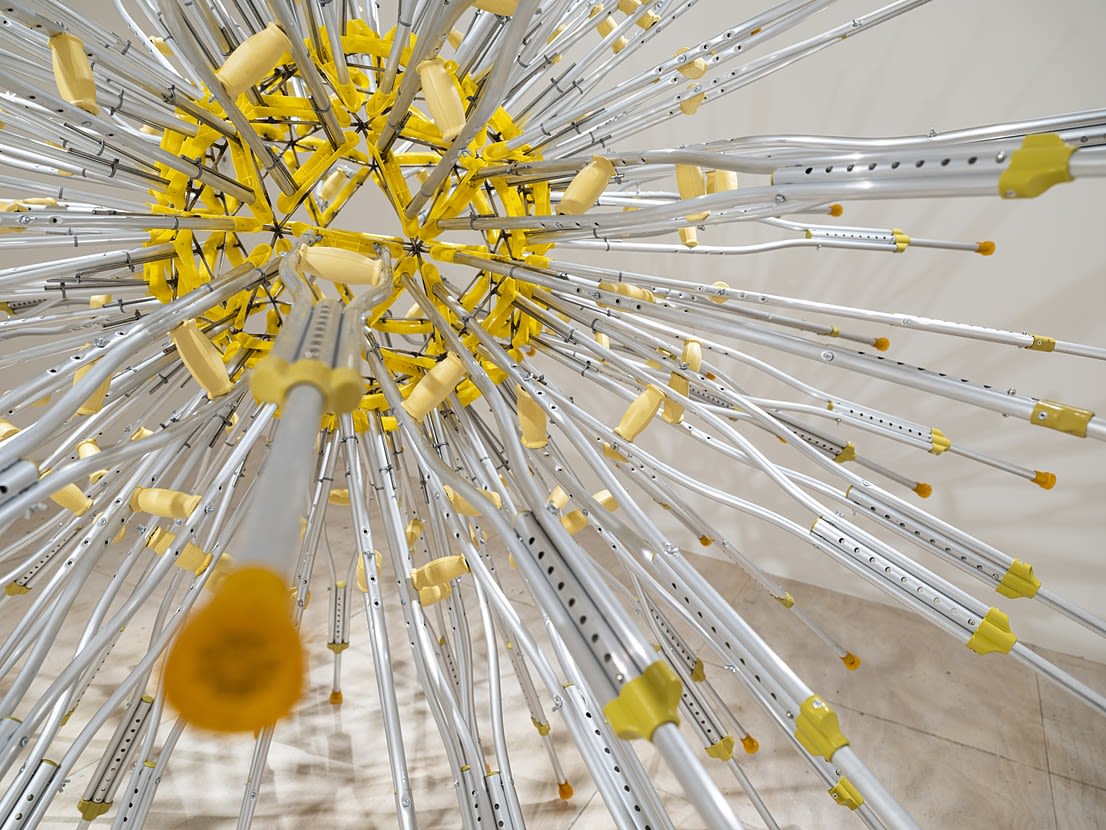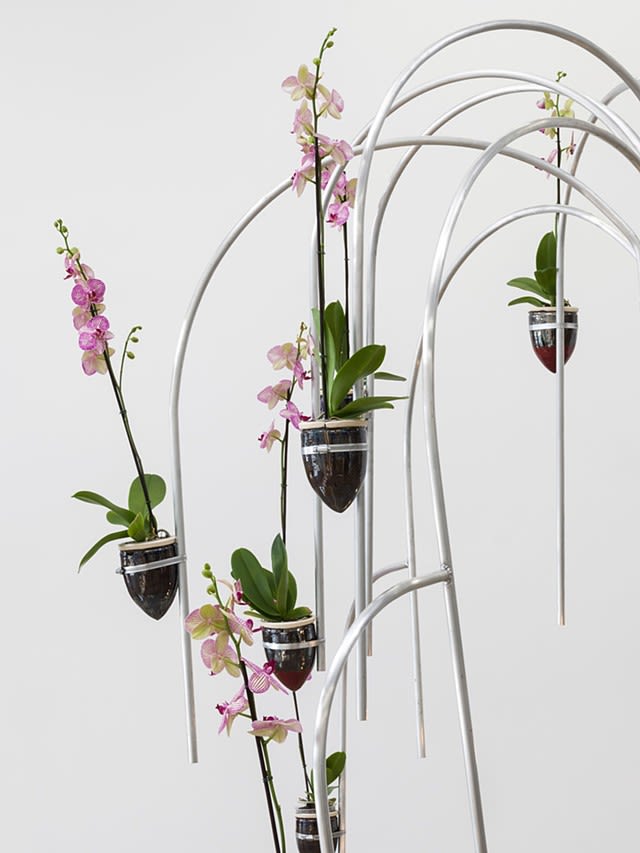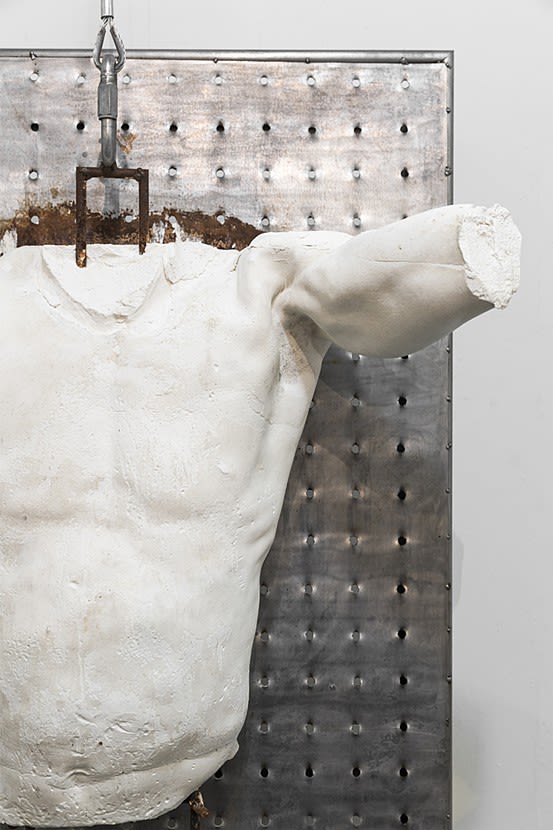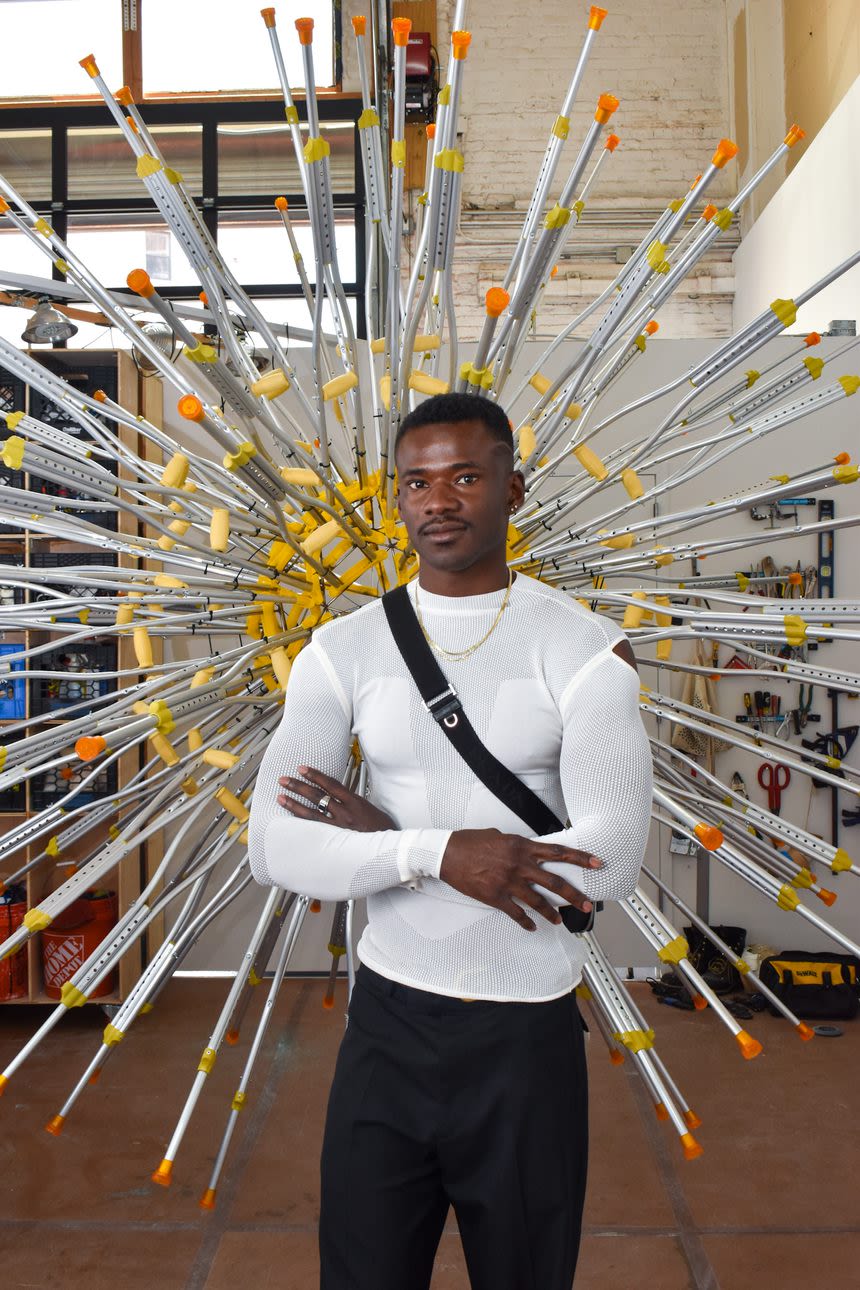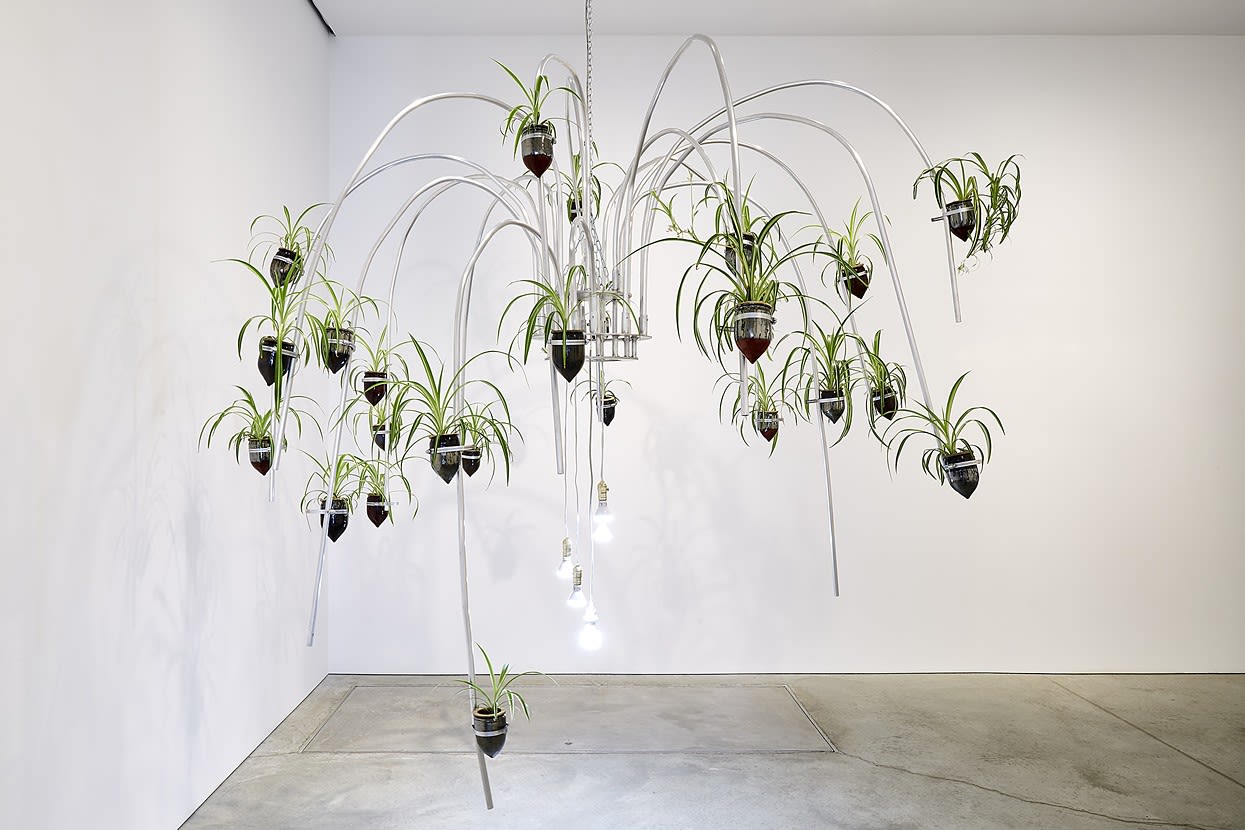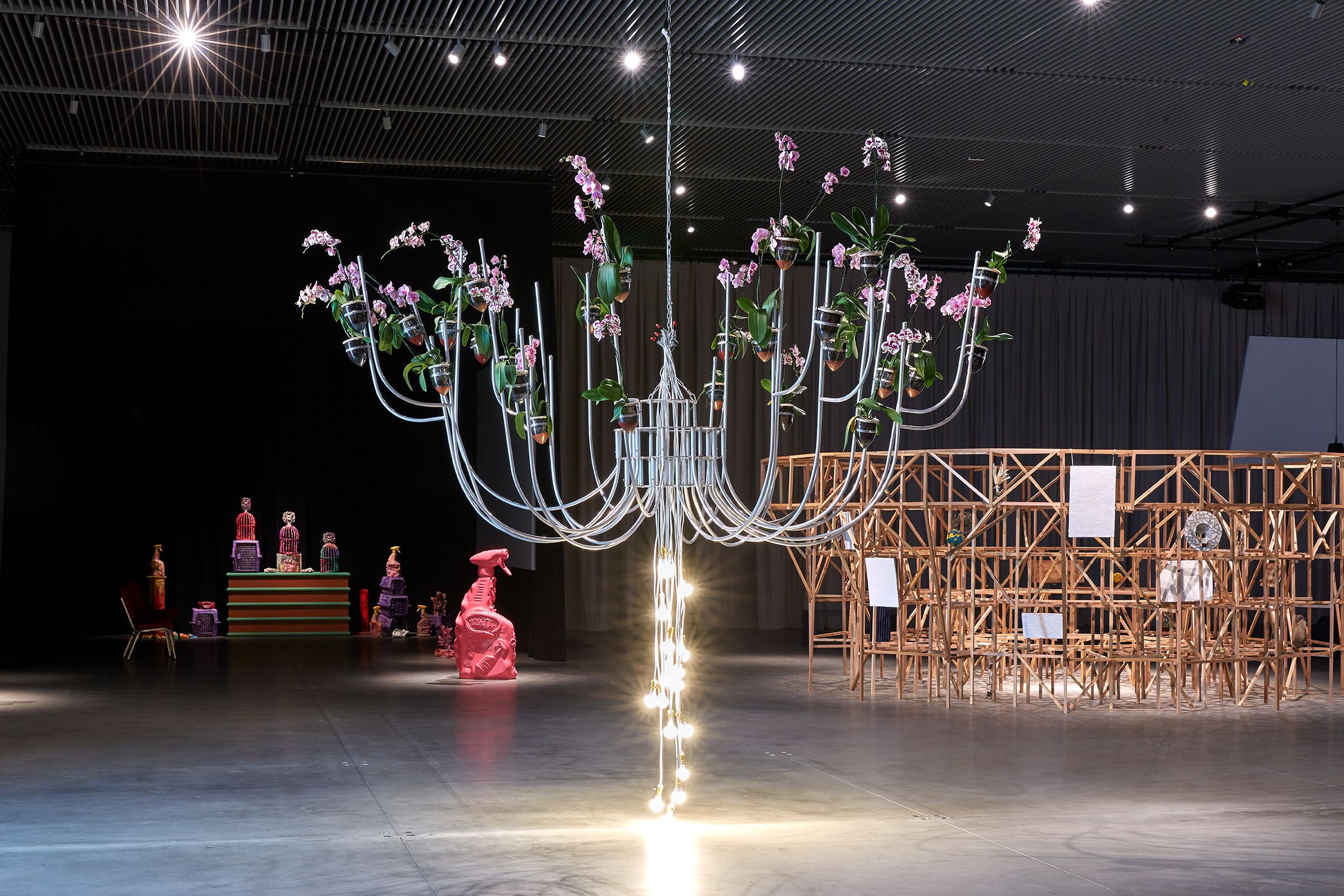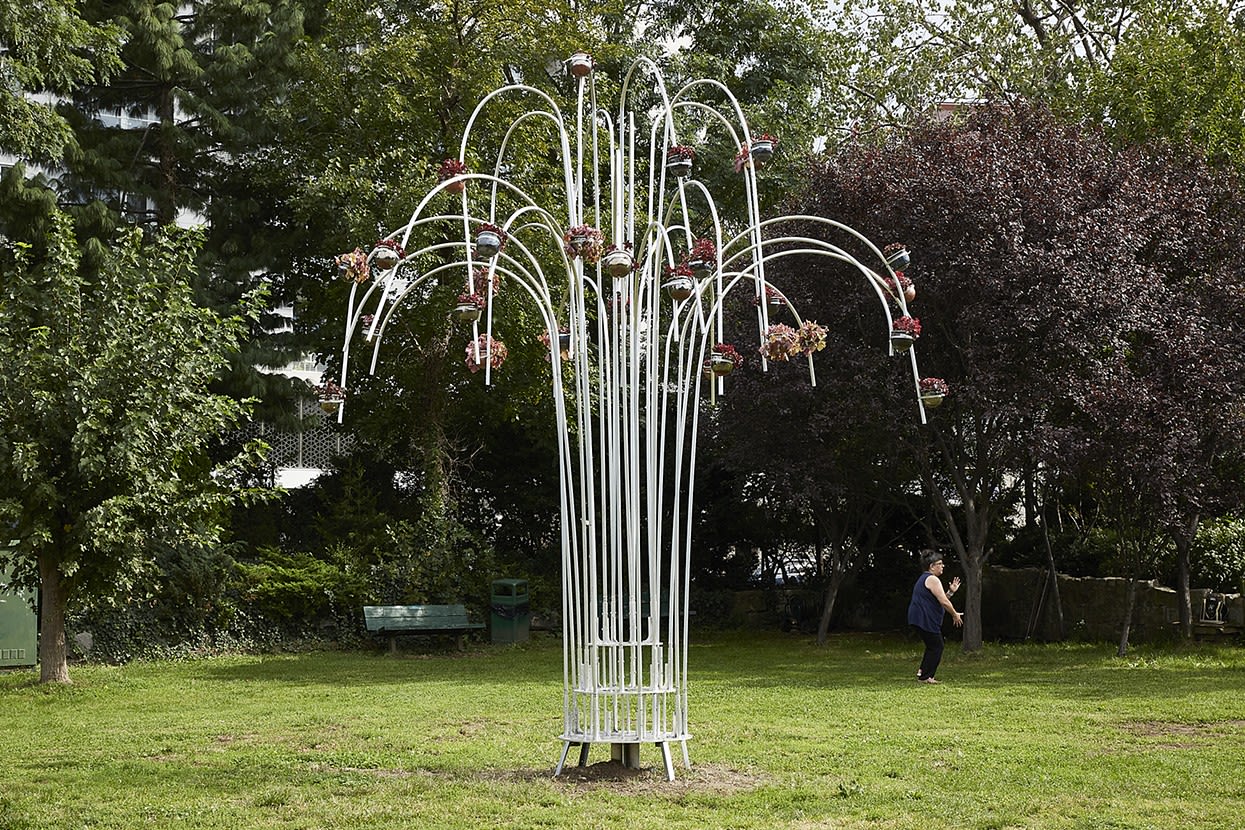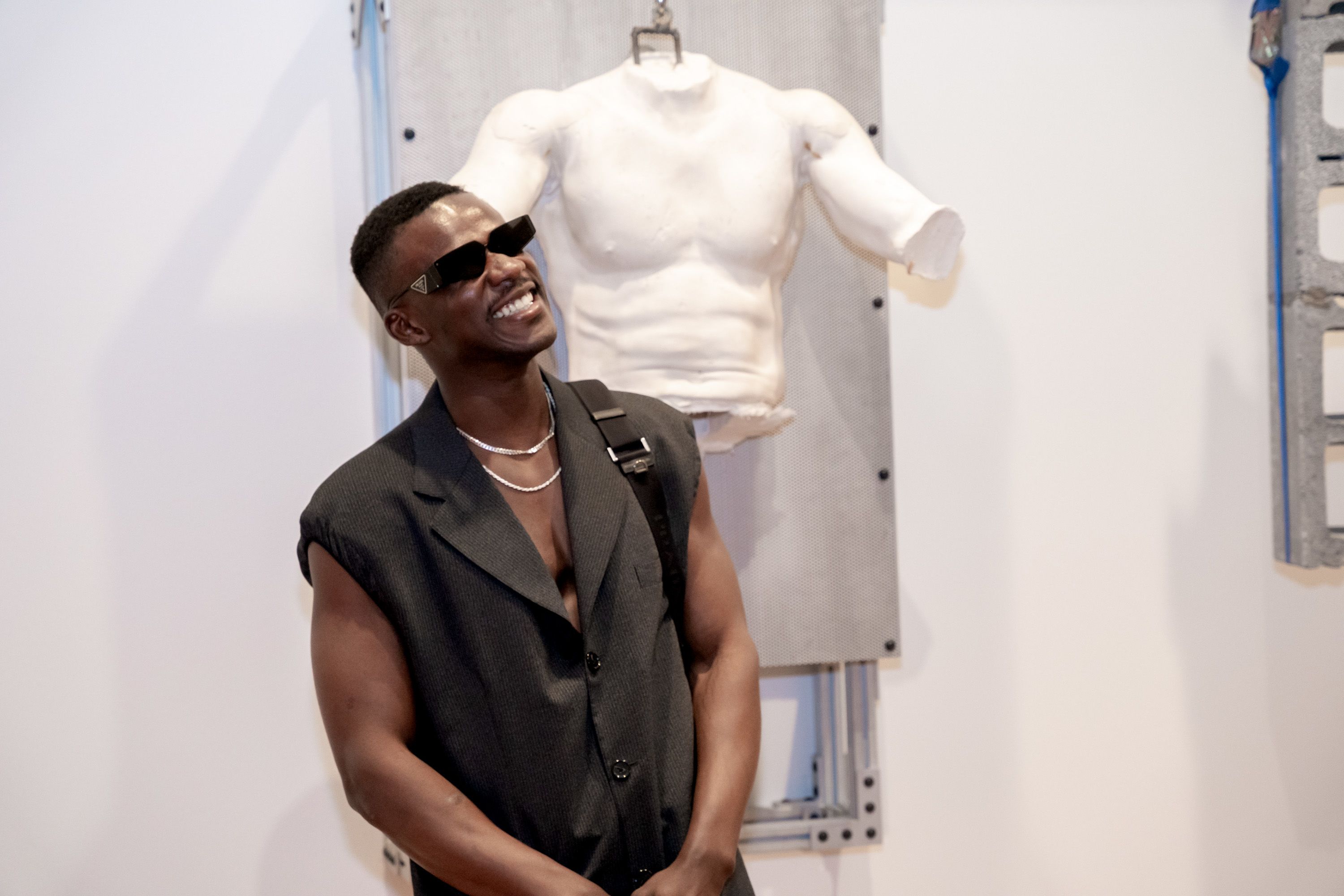The Artistic Evolution of Jeffrey Meris
Since being named a 30 Under 30 honoree in 2020, Jeffrey Meris, TYL ’15, has expanded his artistic practice, engaging with themes of ecology, embodiment and care through ambitious projects, including his upcoming inclusion in Prospect New Orleans.
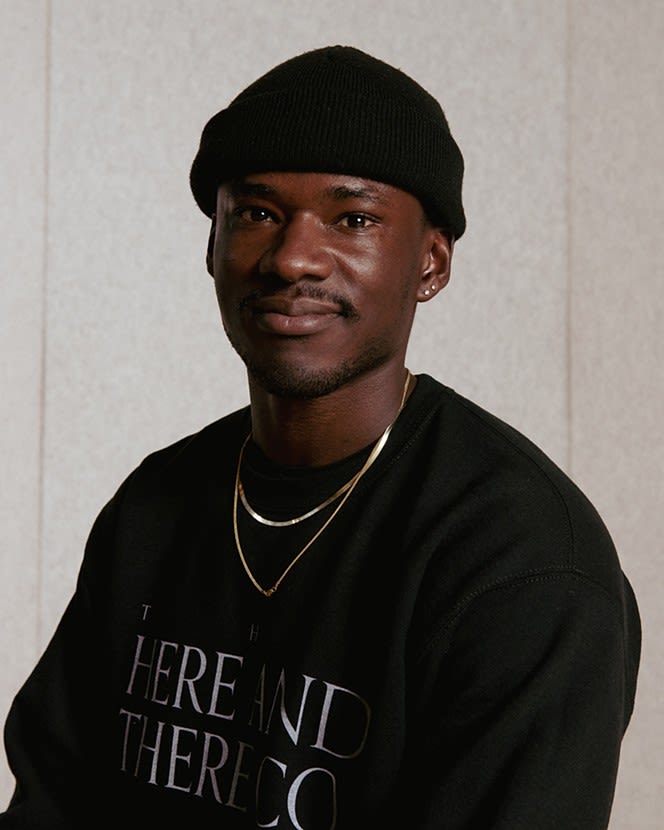
Being selected as a 30 Under 30 awards honoree in 2020 was a validating moment for Jeffrey Meris, TYL ’15, affirming his choice to attend Temple and reflecting on his growth as an artist since graduation. Hailing from Nassau, Bahamas, Jeffrey Meris began his artistic journey at The University of the Bahamas before transferring to Temple's Tyler School of Art and Architecture. It was here that he first encountered socially engaged art which at the time became a core tenet of his practice. Temple professors also pushed him to become more ambitious and introduced him to a multifaceted approach, where he gained valuable skills in sculpture; metalworking, moldmaking, video and sound editing, glass blowing and more.
Since then, Jeffrey has further transformed his multidisciplinary art practice, engaging themes of ecology, embodiment, identity and care through innovative mediums and thought-provoking projects. His current focus is working across sculpture, installation performance and drawing. From notable exhibitions to significant collaborations, including his upcoming participation in Prospect 6 in New Orleans, November 2, 2024, join us as we delve into Meris’ experiences over the past four years and the ways in which his work continues to evolve and inspire.
The following Q&A has been condensed for clarity and conciseness.
The following Q&A has been condensed for clarity and conciseness.
How has your career evolved since you were featured in 2020?
Since receiving the 30 Under 30 award, I've transitioned from my fellowship at NXTHVN in New Haven, Connecticut to a studio practice based in New York City. I've participated in various programs including Sharpe Walentas Studio Program, Triangle Arts residency, and the legendary Studio Museum in Harlem Artist in Residency, along with receiving grants from the Pollock-Krasner Foundations and Artadia.
Excitingly, I'm currently preparing for Prospect New Orleans, co-curated by Ebony G Patterson and Miranda Lash, where I'll exhibit alongside my former Temple professor and mentor, Karyn Olivier along with others. Recently, I opened an exhibition called "Yes, Chef," curated by Zoe Lukov, at Water Street Projects in the Financial District. I will be exhibiting at the Historic Hamptons House and exhibiting with François Ghebaly at the main fair during Art Basel Miami Beach 2024.
Next year, I’ll exhibit at Tufts University Art Gallery, which will travel to the John Michael Kohler Art Center. I'm also featured in " Emancipation: the Unfinished Project of Liberation" at The Telfair Museums in Savannah, GA. The Emancipation Project started at the Amon Carter Museum in Fort Worth, TX, then to several other venues, including the Newcomb Museum of Art and Williams College Museum of Art. It's been a whirlwind of exhibitions and projects; I’m looking forward to sharing accomplishments to come in 2025.
Meris' work titled "High Heel"
Meris' work titled "High Heel"
How has your artistic vision changed since 2020?
While my art has always been and will always be civic-minded and people-engaged, at Temple I focused on storytelling with people as an active component. My work was almost entirely socially engaged back then, but what art isn’t? One of my most notable projects during my Temple years was Dis We Tea Party. Now, I view it as telling stories about the world around me as I see it, expanding my audience while maintaining some of my original strategies.
Around the time that I was recognized, my work was deeply critical of racialized trauma and navigating my identity as a Black, queer immigrant in the U.S often from an anthropological and political lens. I realized that while this perspective was necessary, it was both not enough and exhausting. Since then, I've shifted my focus toward restorative practices and generative strategies, emphasizing healing for myself and my community.
Meris' Work
To the Rising Sun (Detail), photo courtesy of Studio Museum in Harlem
To the Rising Sun (Detail), photo courtesy of Studio Museum in Harlem
Catch a Stick of Fire III, photo courtesy of Matthew Brown Gallery, LA
Catch a Stick of Fire III, photo courtesy of Matthew Brown Gallery, LA
The Block is Hot (Detail), photo credit Roni Aviv
The Block is Hot (Detail), photo credit Roni Aviv
Is there anything on the horizon that you're looking forward to?
Prospect New Orleans, which is such a momentous project with significant gravity. It was founded in 2007 after Hurricane Katrina, when countless artists left New Orleans. A group of curators, artists and stakeholders came together to revitalize its culture and economy. Now, every three years, Prospect invites 50 to 60 artists to engage with the city in innovative ways. I've always respected and looked forward to this event, even though I hadn't attended until I was invited two years ago. People often call New Orleans the "most northern Caribbean city" because it has that vibrant, funky spirit. My work explores the connection and relationship between New Orleans and Nassau to open up a dialogue that pushes the boundaries of my artistic practice and celebrates our shared cultures.
Can you tell us more about your Prospect New Orleans exhibition?
My work will be exhibited both in Nassau, Bahamas, where I’m from, and in New Orleans, LA—essentially split 50/50 between the two cities. I’m exploring light as both a metaphor and a material, aiming for a light activation that allows these two cities to resonate with each other in a poetic, conceptual way.
In the Bahamas, religion and school are intertwined despite being a secular state. From first grade to twelfth, we had daily devotions, including a song called “I Am a Promise” written by Claire Holley. Its lyrics—“I am a promise, I am a possibility”—resonate with me as a life mantra.
When I visited New Orleans, I was struck by the lighthouses, reminiscent of the abandoned ones in the Bahamas. This inspired my project, where I use Morse code to translate the song’s lines into light signals at historic sites in both cities. These lights symbolize a call and response, much like the deeply rooted West African tradition found in Black Churches.
This work reflects our shared connections across places like New Orleans, Nassau, and beyond. The overarching message is a shared aspiration and the promise of fulfilling our deep Black diasporic journey. We've collectively endured so much, and our futures are intertwined, highlighting that the full emancipation of Black people is essential for everyone’s progress.
What's been the most rewarding part of your journey since 30 Under 30?
Every day that I step into my studio, I’m surrounded by my art, my tools and my ideas; this inspire me. I feel grateful to wake up and immerse myself in creativity and beauty. Each day I get to do this work, I feel like I’m winning. It’s a chance to reflect on what troubles me; to try to make the world a better place using the tools that I know best.
What advice would you give to Temple’s emerging artists trying to navigate their own career paths?
First and foremost, stay true to who you are and what you believe in. Sometimes that means doing non-art jobs to support your passion. For example, after I finished graduate school, my first job was waiting tables. That didn’t change the fact that I knew in my soul that art was what I needed to pursue. I’d wait tables during the day and squeeze in studio time at night. Believing in your practice often requires hard investments. Apply to everything and remember that a "no" isn’t a final answer—it’s just a “not right now.” Keep pushing forward; eventually, something will work out.
Catch a Stick of Fire: Dark Man X
Catch a Stick of Fire: Dark Man X
And Ever an Edge
And Ever an Edge
Tet Chaje
Tet Chaje
Meris with his work titled "The Block is Hot" at the opening of Emancipation: The Unfinished Project of Liberation, photo courtesy of Amon Carter Museum
Meris with his work titled "The Block is Hot" at the opening of Emancipation: The Unfinished Project of Liberation, photo courtesy of Amon Carter Museum
What does it mean to be Temple made?
I’m feeling nostalgic as I approach my ten-year anniversary since leaving Temple. I went to Temple and got a seriously good education—one that holds its own against any other art school out there. Honestly, I think it's one of the best. The state-of-the-art facilities and excellent professors gave me a stellar experience. But being Temple Made is about innovation, risk-taking and being observant of the world around you—taking that knowledge and applying it. Temple prides itself on being “Philly made,” and living in Philadelphia is an education in itself. This relationship between Temple and the city shapes what it means to be Temple Made. Philadelphia has its challenges, but those challenges create opportunities for growth and innovation.
How do you stay engaged with Temple?
Many of the faculty I studied with during my undergraduate years are now part of the same conversations I’m having as an artist, and their support has been invaluable. There's one particular faculty member who I know must be tired of my requests for recommendation letters (I love you KO), but she keeps writing them—and does a stellar job every time. I've also received support for my art exhibitions from both faculty and peers, many of whom are now working artists or arts professionals in New York. I’m also scheduled to give a talk in Karyn’s senior sculpture class this October.
